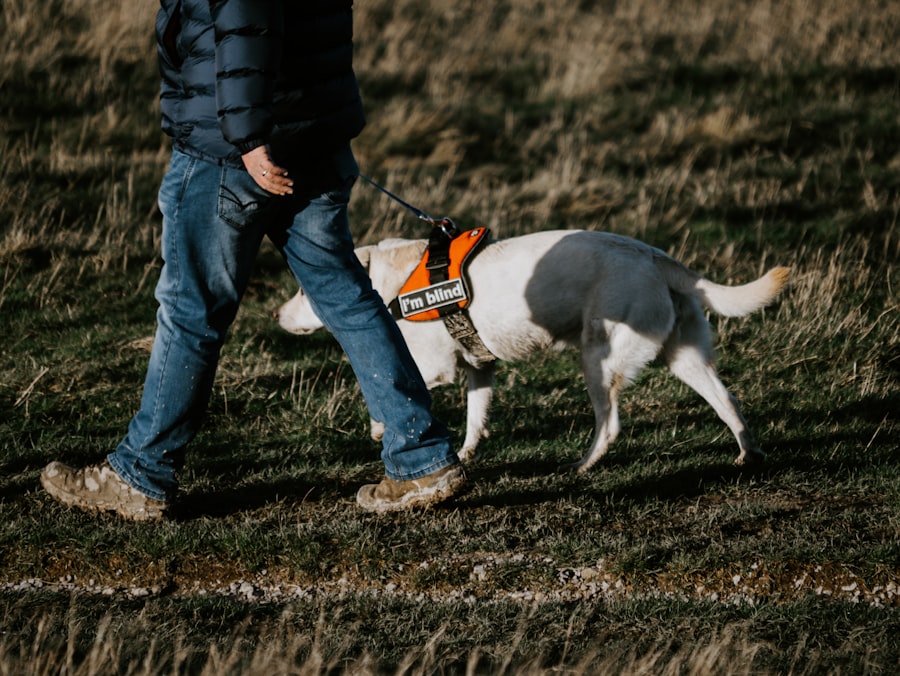When it comes to window covering installation, safety should always be at the forefront of our minds. I can’t stress enough how crucial it is to prioritize safety, not just for ourselves but also for our clients and anyone else who might be in the vicinity. The installation process often involves working with ladders, tools, and sometimes even electrical components, which can pose significant risks if not handled properly.
By adhering to safety protocols, we can minimize the chances of accidents and injuries, ensuring a smooth and efficient installation process. Moreover, a safe working environment fosters a sense of professionalism and reliability. When clients see that I take safety seriously, it builds their trust in my abilities.
They know that I’m not just focused on getting the job done quickly; I’m also committed to doing it safely. This not only enhances my reputation but also encourages repeat business and referrals. In an industry where word-of-mouth can make or break a career, demonstrating a strong commitment to safety can set me apart from the competition.
Key Takeaways
- Safety in window covering installation is crucial to prevent accidents and injuries.
- Installers should always wear personal protective equipment such as gloves, goggles, and helmets.
- Proper ladder safety and usage is essential to prevent falls and injuries.
- Materials should be handled and transported safely to avoid accidents and damage.
- Working at heights requires best practices such as using fall protection equipment and securing tools.
Personal Protective Equipment for Installers
Protecting Myself from Harm
As a window covering installer, I always make it a point to wear the appropriate personal protective equipment (PPE) before starting any job. This includes safety glasses to protect my eyes from dust and debris, gloves to shield my hands from sharp edges or splinters, and steel-toed boots to safeguard my feet from heavy materials.
Assessing Job-Specific Risks
Each piece of equipment plays a vital role in reducing the risk of injury, and I’ve learned that it’s better to be over-prepared than underprepared. In addition to the basics, I also consider other forms of PPE depending on the specific job requirements. For instance, if I’m working with power tools that produce loud noises, ear protection becomes essential.
Additional Precautions for Specific Situations
Similarly, if I’m dealing with materials that could create airborne particles, a mask is a must. By taking the time to assess the risks associated with each installation project, I can ensure that I’m equipped with the right protective gear. This not only keeps me safe but also sets a positive example for anyone else on-site.
Proper Ladder Safety and Usage

Ladders are an indispensable tool in window covering installation, but they can also be a source of accidents if not used correctly. I’ve learned that following proper ladder safety guidelines is essential for preventing falls and injuries. Before I even think about climbing up, I always inspect the ladder for any signs of damage or wear.
A sturdy ladder is crucial; if it’s wobbly or has broken rungs, it’s simply not worth the risk. When it comes to using the ladder, positioning is key. I make sure to place it on a flat, stable surface and extend it at the correct angle—about 75 degrees is ideal.
As I climb, I keep my body centered on the rungs and avoid overreaching, which can easily lead to losing balance. If I need to carry tools or materials while climbing, I’ll use a tool belt or hoist them up after I’m securely on the ladder. By adhering to these practices, I can significantly reduce the likelihood of accidents while working at heights.
Handling and Transporting Materials Safely
Handling and transporting materials safely is another critical aspect of window covering installation that I take seriously. Whether it’s large rolls of fabric or heavy blinds, improper handling can lead to injuries or damage to the materials themselves. I always make sure to lift with my legs rather than my back, keeping my core engaged to maintain stability.
This simple technique has saved me from countless strains and injuries over the years. When transporting materials, I pay close attention to how they’re secured in my vehicle. Loose items can shift during transit, leading to potential hazards when unloading.
I use straps or nets to keep everything in place and ensure that heavier items are loaded first for better weight distribution. Additionally, when unloading materials at the job site, I take my time and avoid rushing. It’s easy to get caught up in the excitement of starting a new project, but being patient and methodical helps prevent accidents.
Best Practices for Working at Heights
Working at heights is an integral part of window covering installation, but it comes with its own set of challenges and risks. To mitigate these risks, I’ve adopted several best practices that have proven effective over time. First and foremost, I always ensure that my work area is clear of any obstacles that could cause me to trip or lose my balance while on a ladder or scaffold.
Another important practice is using fall protection equipment when necessary. Depending on the height and nature of the installation, I may use harnesses or guardrails to provide an extra layer of security. It’s essential to assess each job individually; what works for one installation may not be suitable for another.
By being vigilant and adaptable, I can create a safer working environment for myself and anyone else involved in the project.
Electrical Safety Precautions

Power Supply Safety
Before starting any work that involves electrical components, I always make sure to turn off the power supply to avoid any accidental shocks. It’s a simple step that takes just a moment but can prevent serious injuries.
Insulated Tools and Manufacturer Guidelines
I also take care to use insulated tools when working near electrical wiring. This adds an extra layer of protection against accidental contact with live wires. Additionally, I make sure to follow all manufacturer guidelines when installing motorized window coverings; this includes understanding how to properly connect them to existing electrical systems.
Proactive Electrical Safety Measures
By being proactive about electrical safety, I can ensure that my installations are not only functional but also safe for my clients.
Safe Handling of Tools and Equipment
The tools we use in window covering installation are essential for getting the job done right, but they can also pose risks if not handled properly. I’ve learned that keeping my tools organized and in good condition is crucial for maintaining safety on the job site. Before starting any project, I take inventory of my tools and check for any signs of wear or damage.
If something isn’t functioning correctly, I either repair it or replace it before proceeding. When using power tools, I always follow the manufacturer’s instructions and wear appropriate PPE. It’s easy to get complacent after using a tool multiple times, but staying vigilant is key to preventing accidents.
Additionally, I make sure to store tools safely when they’re not in use—this means keeping them out of reach of children and ensuring they’re properly secured in my vehicle during transport. By treating my tools with respect and caution, I can create a safer work environment for myself and those around me.
Emergency Response and First Aid Training for Installers
Despite our best efforts to maintain safety on the job site, accidents can still happen. That’s why I believe that having emergency response and first aid training is essential for anyone involved in window covering installation. Knowing how to respond effectively in an emergency situation can make all the difference in minimizing injuries and ensuring everyone’s safety.
I’ve taken the initiative to enroll in first aid courses and CPR training so that I’m prepared for any situation that may arise on-site. This training has equipped me with the skills needed to handle minor injuries like cuts or sprains as well as more serious emergencies like falls or electrical shocks. Additionally, having a well-stocked first aid kit readily available on-site is crucial; it ensures that immediate care can be provided if needed.
By being proactive about emergency preparedness, I can work with confidence knowing that I’m equipped to handle whatever challenges may come my way. In conclusion, safety should never be an afterthought in window covering installation; it should be woven into every aspect of our work. From using personal protective equipment to following best practices for working at heights and handling tools safely, each step we take contributes to a safer environment for ourselves and our clients.
By prioritizing safety and being prepared for emergencies, we not only protect ourselves but also enhance our professionalism in this rewarding field.
If you are looking to perfect your drapery installation skills, you may want to check out this article on common pitfalls and best practices for drapery installers. This article provides valuable insights and tips that can help you ensure a successful and safe installation process. Remember, safety should always come first when working with window coverings, so it’s important to stay informed and up-to-date on the best practices in the industry.
FAQs
What are the best practices for window covering installers to ensure safety?
Window covering installers should always follow safety guidelines provided by the manufacturer of the products they are installing. This includes using proper tools, wearing appropriate safety gear, and following installation instructions carefully.
What are some common safety hazards for window covering installers?
Common safety hazards for window covering installers include working at heights, using power tools, handling sharp objects, and working with heavy materials. Installers should be aware of these hazards and take necessary precautions to prevent accidents.
What safety gear should window covering installers use?
Window covering installers should use safety gear such as gloves, safety glasses, hard hats, and non-slip footwear to protect themselves from potential hazards during installation. Additionally, they should use fall protection equipment when working at heights.
How can window covering installers prevent accidents and injuries on the job?
To prevent accidents and injuries, window covering installers should undergo proper training, follow safety protocols, use appropriate safety gear, and be aware of potential hazards in their work environment. They should also communicate with their team members and customers to ensure a safe working environment.
What should window covering installers do in case of an emergency or accident?
In case of an emergency or accident, window covering installers should be prepared to administer first aid if necessary and seek medical attention for any injuries. They should also report the incident to their supervisor or employer as soon as possible.



